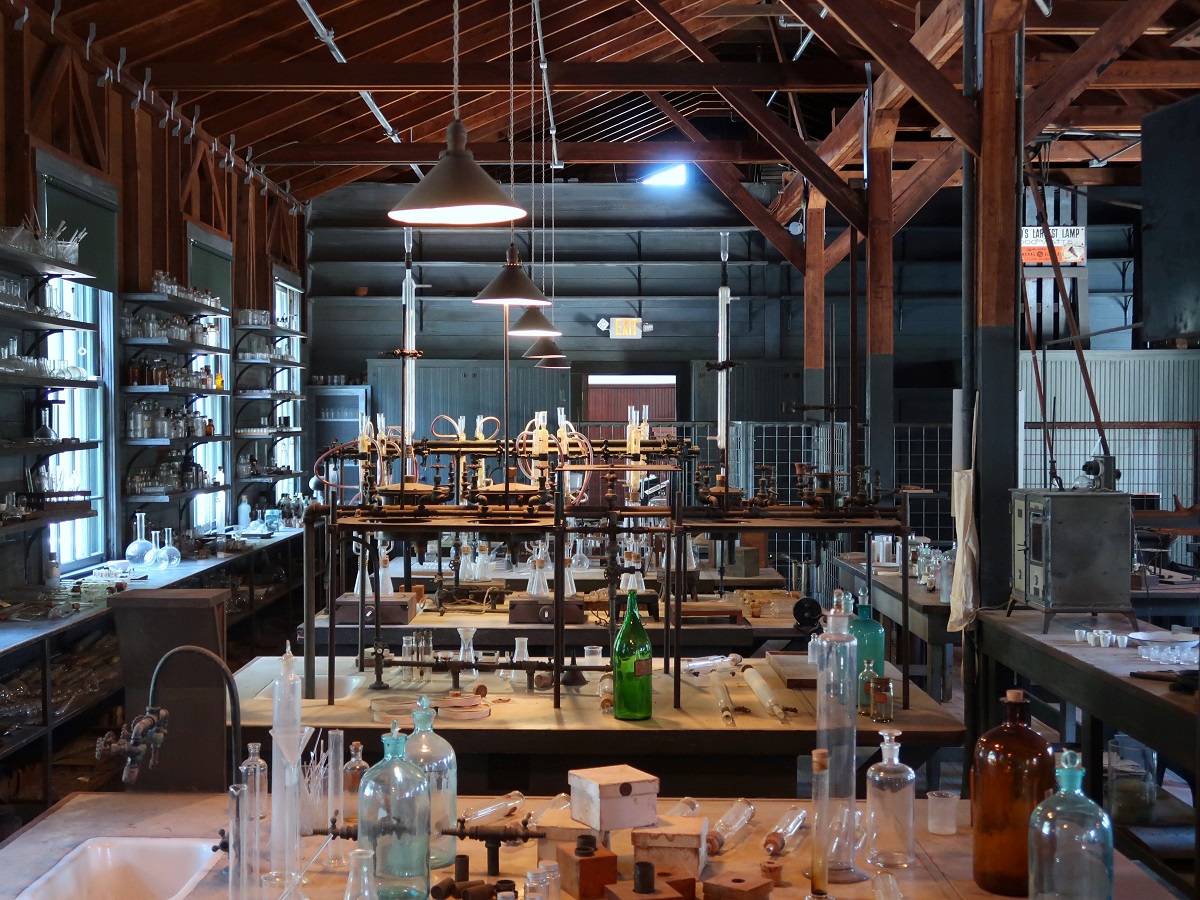The Life Science Industry’s Transformation
Portal Innovations’ John Flavin and Polsinelli’s Eric Greenfield on the sector’s complex evolution, trends to watch and forthcoming challenges.
Innovation is key in the life science sector’s ongoing efforts to transform itself as it seeks to find new paths to operational efficiency and effectiveness and keep its long-term sustainability and resilience. Although COVID-19 bolstered the need for experimental and lab space, demand is expected to grow in the upcoming years, whether it is for coronavirus-related medicine or other drugs. “The dawn of a new phase of the biocentury is upon us,” John Flavin, founder & CEO of Portal Innovations, told Commercial Property Executive.
Founded in 2020, the Chicago-based venture has embarked on a mission to connect life sciences, medtech, bioinformatics startups and innovation clusters to investors. In the interview below, Flavin and Eric Greenfield, real estate division chair at law firm Polsinelli, provide a forward-looking analysis of the sector.
READ ALSO: From Mall to Life Science: A Rising Trend
Please elaborate on the way the life sciences sector has changed throughout the past year.
Greenfield: The life sciences sector has always been an important part of the market, though we haven’t necessarily always called it by that name, and it hasn’t always drawn the broad attention that it does now. In 2020, we saw it move from being something of a well-kept secret in the industry, focused on by a pretty narrow set of players, towards being something that everyone is talking about and looking at.

(From left to right) John Flavin, Eric Greenfield. Images courtesy of Portal Innovations and Polsinelli
There is obvious growth here, driven by the need for experimental space such as wet labs where pharmaceutical, chemical and biological research work is done. Cities looking to attract a talented workforce, especially clustered around universities, recognize that having this space available is part of the infrastructure needed to be a life sciences or biotech center.
Flavin: There is increased awareness of the importance of the sector thanks to the work that companies such as Moderna and Pfizer have done in developing the COVID-19 vaccine. Certainly, that was not lost on investors who are putting record-levels of venture and institutional capital into the biotech companies that are applying the similar science that led to the vaccine development and other breakthrough technologies into developing new therapeutics for other diseases as well.
Tell us more about the long- and short-term strategies for real estate developers in the life sciences industry.
Greenfield: In the short term, there’s something of a land rush going on as everyone sees the opportunities here and wants to try to get into the market as fast as possible and repurpose existing vacant spaces to market them as life science space.
The truth is, you can’t just offer up some tenant improvements to turn an existing office space into a suitable wet lab. There are some structural requirements such as flooring that will bear the weight of heavy equipment and environmental and safety needs that dictate what kind of ventilation systems you have or how thick your walls are. Those needs are far better understood by experienced long-term players.
As a long-term strategy, we see some of the smartest movers investing in incubator spaces—similar to the ones you already have for technology startups—and/or partnering with industry veterans. There’s a movement toward organizing in hub centers, similar to the tech corridors and medical districts that have come to define those verticals.
 Flavin: Due to improved science leading to more efficient drug discovery and development, the increased investment activity that we’re seeing is expected to continue well into the future. Those investments, in turn, will continue to drive increased demand for this specialized lab space.
Flavin: Due to improved science leading to more efficient drug discovery and development, the increased investment activity that we’re seeing is expected to continue well into the future. Those investments, in turn, will continue to drive increased demand for this specialized lab space.
Life sciences companies are seeing that the talent they need can be found in different parts of the country, so, while biotech has really been Boston and Cambridge’s calling card, over the next 10 years I think we’ll see a distribution of these companies to places beyond Boston and San Francisco. While investments in lab infrastructure will continue in those markets, we’ll see growing investment in areas such as Chicago, Houston and Atlanta. Over time, the markets likely to grow and succeed are the ones that have the presence of academic powerhouses and the whole ecosystem of capital, space and talent that fuels this industry.
READ ALSO: BioMed Realty Plans 1.3 MSF Life Science Hub
There is a lot of discussion in the industry around repositioning vacant commercial space. What’s the best strategy for conversions?
Flavin: Conversions are very difficult, expensive and not conducive to our model, since designing the right space to create the best experience for our companies is critical.
Tell us more about the challenges the life sciences sector will face in 2021.
Flavin: It’s a fair question to think about whether the change in administration in Washington, D.C., might cause the regulatory landscape to shift. There’s a spotlight on the FDA right now with the approval of COVID-19 treatments and vaccines, so we’ll likely see a push to make sure their rigorous standards continue to be upheld while also getting products to patients faster. Capital will continue to flow in, if investors will continue to see a clear and consistent path for drug approvals.
On the industry side, innovation is the key. The days of developing “me too” drugs are in the rearview mirror. To succeed, you need to produce innovative products that achieve meaningful outcomes for patients. Companies are trying to stay abreast of a rapidly changing market.
The life sciences companies themselves, as the users of the space, are dealing with enormous complexity—between data science, artificial intelligence and new devices, the convergence of all these different segments in how you deliver health care to the consumer.
Life sciences is an increasing blend of disciplines consisting of math, biology, physics and chemistry. The new innovators understand this convergence and they are a new breed of scientists and entrepreneurs. The ecosystems and markets that will succeed recognize this and the lab infrastructure needs to evolve to support this change as well. Chicago in particular is well set up to capitalize on and support this. What markets are buyers interested in and what makes them appealing?
What markets are buyers interested in and what makes them appealing?
Greenfield: Chicago seems to be a hotbed, largely because of its relatively low cost of living, compared to San Francisco and New York. It’s a city with many universities and hospitals. Any place featuring a similar mix of medical schools and scientific institutions is poised to be a research center, if thinking smart. A good tax structure is important, too. Therefore, I think we’ll see incentives emerging in order to attract this kind of development.
As cities take a closer look at this sector and build up life sciences as a part of their economy, zoning laws and licensing requirements will also catch up. More clarity around safety requirements, electrical needs and storage issues is going to be part of a more mature market. Buyers do want that kind of certainty. The thing that’s most appealing to buyers is going to them and asking them what they need. With a new product, you can’t just guess at what they want. Developers are better off building to their requests.
Flavin: The investments in lab infrastructure in Boston/Cambridge and San Francisco and San Diego won’t stop, but could crest. There are certain markets that are overscienced and underdeveloped in this regard, so we expect to see more activity in places such as Chicago; Atlanta; Houston; Austin, Texas; Nashville, Tenn., and Los Angeles.
Any major trends we should keep an eye on going forward?
Greenfield: I expect to see more life science incubator spaces coming together, built by angel investors which have money, but also real know-how. As for all the talk about rehabbing vacant spaces into life sciences, there certainly are some options out there, but it depends on what you’re starting with. Older product might not be the best fit for this use.
Flavin: It will be interesting to see what a life sciences venture capital firm will look like in 10 years. There’s already a blurring of the lines in terms of capital sources and investors wanting to participate in this space. A more diverse investor pool is emerging beyond historically niche life science expert investors. The dynamics are reforming the way a new drug travels from an idea in an academic lab through development, FDA approval and eventually to patients.








You must be logged in to post a comment.